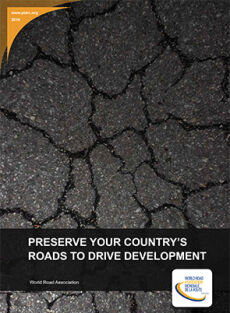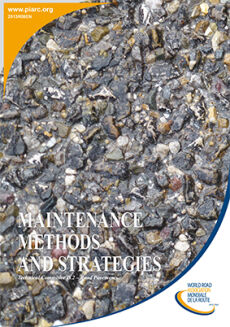Technical Reports Road assets management
This page lists technical reports of PIARC in the field of road assets management. These publications are classified chronologically.
-
Preserve your Country's roads to Drive Development

The economy of every country has a strong relationship with its road network. A well preserved network will attract investment and make growth happen. It will also help meet the UN Sustainable Development Goals by improving accessibility and mobility to schools, health facilities and markets. It will also go some way to meeting targets on road safety and climate. This short, well illustrated document explores what key decision takers need to know about the basic principles of road maintenance, [...]
-
Assessment of budgetary needs and optimisation of maintenance strategies for multiple assets of road network

Good road infrastructure is a fundamental basis on which to build a strong economy and society. As the ability to conduct proper maintenance is largely influenced by the available budget, budget definition is an important starting point in realising the overall goal. Based on a comprehensive investigation in the form of interviews with public road administrations and private sector concessionaires, a large quantity of information on good practice in budgetary assessment and optimisation of maintenance [...]
-
Estimation of load carrying capacity of bridges based on damage and deficiency

Based on the answers from 18 road authorities in 16 countries this report examines the extent to which an estimation of the load bearing capacity of road bridges is made based on damage and deficiency. The report firstly examines the Codes/Directives/Manuals used for the estimation of the load carrying capacity of road bridges and what triggers the inspection procedures that lead to the estimation of the load carrying capacity. It then deals with the practice of road bridges inspections in different [...]
-
The importance of road maintenance

Road infrastructure provides a fundamental foundation to the performance of all national economies, delivering a wide range of economic and social benefits. Adequately maintaining road infrastructure is essential to preserve and enhance those benefits. The importance of maintenance needs to be recognised by decision makers, funded appropriately and well managed to ensure maximum value is achieved. Inadequate levels of investment or poor management of the road network will have serious consequences [...]
-
Maintenance methods and strategies

This report presents the results of the answers from 16 countries to a survey regarding improved maintenance methods for flexible and semi-rigid pavements and the maintenance strategies. Regarding improved maintenance methods, the variations in the answers were found to be large. It also became clear that the knowledge about the long-term performance of different maintenance methods varies. It is not always clear whether the durability is an "expected" durability or an "achieved" durability. Some [...]